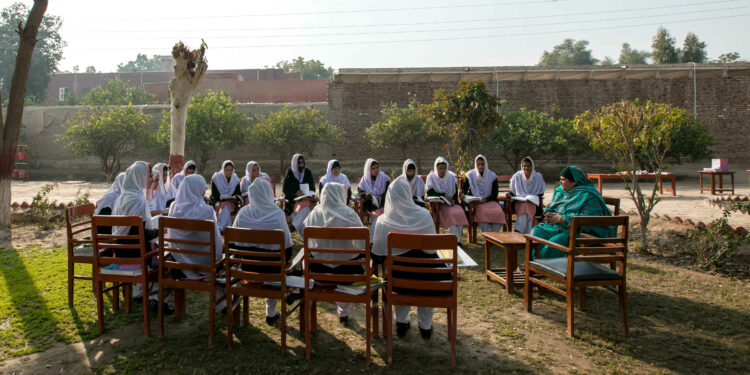Female Genital Mutilation

Background
Female genital mutilation (FGM) refers to “all procedures involving partial or total removal of the external female genitalia or other injury to the female genital organs for non-medical reasons” and is classified in four types (1). For centuries, these practices have been carried out by many different peoples and societies for traditional, social and cultural reasons, namely: psychosexual, sociological and cultural, hygienic and aesthetic, socio-economic factors where it is a prerequisite for marriage (2). Due to migration FGM has also become prevalent in many countries outside of the regions where it originated. FGM leads to immediate and long term complications that impact on women’s sexual and reproductive health and childbirth.
The physical and psychological health consequences of FGM vary according to the type and severity of the procedure performed. It can lead to immediate and long-term complications that impact on women’s sexual and reproductive health and childbirth (3). Acute complications include severe pain, shock, haemorrhage and death. Localized infection, acute urine retention, tetanus, hepatitis and HIV infection can also occur. Long-term consequences include cysts and abscesses, keloid scar formation, damage to the urethra resulting in urinary incontinence, dyspareunia (painful sexual intercourse), sexual dysfunction and difficulties with childbirth. FGM may leave a lasting mark on the lives and minds of women who have been subjected to it, with many suffering feelings of incompleteness, anxiety and depression. The frequency of posttraumatic stress disorder is increased in women who have undergone FGM (4).
Medicalization of FGM is an increasing problem, this “refers to situations in which FGM is practiced by any category of health-care provider, whether in a public or a private clinic, at home or elsewhere. It also includes the procedure of reinfibulation at any point in time in a woman’s life” (5). This could possibly be a result of FGM being addressed as a health issue, without including social and cultural factors, for years, and perhaps the hope that performance by a health care provider will reduce the risk of complications of the procedure (6).
Position
In keeping with the interagency call for elimination of FGM (7), ICM recognises and condemns FGM as a harmful practice and a violation of the Human Rights of girls and women.
In keeping with the interagency global strategy to stop health care providers from performing FGM (8), ICM underscores that midwives should refrain from supporting or participating in any form of the practice at any time, and in doing so respecting relevant (inter)national codes of ethics.
ICM, urges its member associations and individual midwives, to be aware and informed about the practice and its health consequences, to ensure the health and Human Rights of girls and women are safeguarded.
ICM calls on governments to create enabling environments that support midwives, and other health care providers, to refrain from supporting or practicing FGM, and to be competent health care providers for women and girls that suffer from complications of it.
Recommendations
ICM urges Member Associations to be advocates for elimination of FGM in their countries by:
- Adopting a policy that is in harmony with this statement.
- Contributing to efforts that protect girl children from harm.
- Supporting international and national organisations, both governmental and nongovernmental, in the adoption of appropriate policies and strategies.
- Contributing to development of legislation for the elimination of FGM.
- Calling on their members to refrain from contributing or supporting FGM practices
- Calling on their members to be aware, informed and competent to provide quality care to childbearing women who have undergone FGM.
Related ICM Documents
Other Relevant Documents
- AbdulcadirJ, Margairaz C, Boulvain M, Irion O. Care of women with female genital mutilation/cutting. Swiss Medical Weekly; Jan6; 140: w13137. 2011.
- Chibber R, El-Saleh E, El Harmi J. Female circumcision: obstetrical and psychological sequelae continues unabated in the 21st century. Journal of Maternal, Fetal, and Neonatal Medicine. 2010.
- Dettmeyer R, Laux J, Friedl H, Zedler B, Bratzke H, Parzeller M. Medical and legal aspects of genital mutilation and circumcision part I: female genital mutilation (FGM). Arch Kriminol Jan- Feb; 227 (1-2): 1-222011.
- UNAIDS/UNDP/UNECA/UNESCO/UNFPA/UNHCHR/UNHCR/UNICEF/UNIFEM/WHO. Eliminating female genital mutilation: an interagency statement. 2008.
- UNFPA/UNHCR/UNICEF/UNIFEM/WHO/FIGO/ICN/IOM/MWIA/WCPT/WMA. Global Strategy to stop health-care providers from performing female genital mutilation. 2010.
- UNFPA. Changing a harmful social convention: Female Genital Mutilation/Cutting. 2005.
- UNFPA. Female Genital Mutilation/Cutting. A statistical exploration. 2005
- UNFPA. FAQ’s on Female Circumcision. 2007
- UNFPA, UNHCR, UNICEF, UNIFEM, WHO, FIGO, ICN, MWIA, WCPA, WMA. 2010. Global Strategy to stop health-care providers from perfoming female genital mutilation. http://www.who.int/reproductivehealth/publications/fgm/rhr_10_9/en/
- UNICEF. 2016. Female Genital Mutilation/Cutting. A Global Concern. https://www.unicef.org/media/files/FGMC_2016_brochure_final_UNICEF_SPREAD.pdf
- WHO. 2016. Female Genital Mutilation. Fact sheet 241. Geneva, http://www.who.int/mediacentre/factsheets/fs241/en/UNECA,
- WHO. 2008. Eliminating female genital mutilation: an interagency statement UNAIDS, UNDP UNESCO, UNFPA, UNHCHR, UNHCR, UNICEF, UNIFEM, WHO.
- http://apps.who.int/iris/bitstream/10665/43839/1/9789241596442_eng.pdf
- WHO. Female Genital Mutilation- new knowledge spurts optimism. PROGRESS in sexual and reproductive health research
Adopted at Brisbane International Council meeting, 2005
Reviewed at Toronto Council meeting, 2017
Due for next review 2023
PS2011_007 V2017
(1) http://www.who.int/mediacentre/factsheets/fs241/en/
(2) http://www.who.int/mediacentre/factsheets/fs241/en/
(3) WHO. 2016. Health Risks of FGM. http://www.who.int/reproductivehealth/topics/fgm/health_consequences_fgm/en/
(4) WHO. 2016. Health Risks of FGM. http://www.who.int/reproductivehealth/topics/fgm/health_consequences_fgm/en/
(5) http://apps.who.int/iris/bitstream/10665/70264/1/WHO_RHR_10.9_eng.pdf
(6) http://apps.who.int/iris/bitstream/10665/70264/1/WHO_RHR_10.9_eng.pdf
(7) WHO. 2008. Eliminating female genital mutilation: an interagency statement UNAIDS, UNDP, UNECA, UNESCO, UNFPA, UNHCHR, UNHCR, UNICEF, UNIFEM, WHO. http://apps.who.int/iris/bitstream/10665/43839/1/9789241596442_eng.pdf
(8) http://apps.who.int/iris/bitstream/10665/70264/1/WHO_RHR_10.9_eng.pdf


